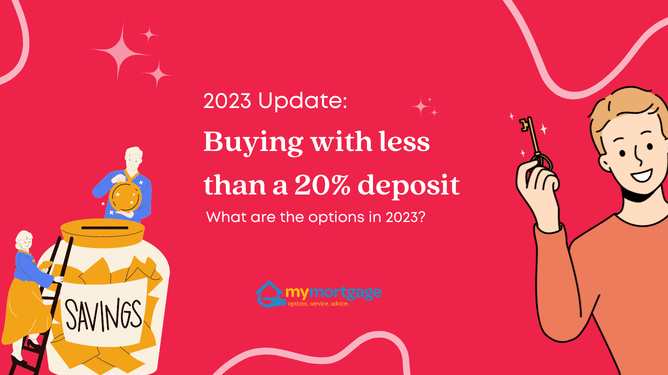Purchasing a home is a significant milestone in many people's lives. However, securing the right financing option can often be challenging, especially for first-time homebuyers or those with limited savings. In New Zealand, two popular choices for aspiring homeowners are the First Home Loan Scheme and applying to a bank for a high-LVR (Loan-to-Value Ratio) home loan. But what other options are there? In this article, we will delve into the key differences between these two options, shedding light on their respective features, benefits, and considerations.
First Home Loan
The First Home Loan Scheme, introduced by the New Zealand government, aims to assist first-time homebuyers in getting onto the property ladder. Here are some key features of the scheme:
Deposit Requirement: Under the First Home Loan Scheme, eligible applicants can obtain a mortgage with a minimum deposit of 5%, whereas standard bank loans usually require a minimum deposit of 20%. The remaining percentage (up to 15%) is backed by the government, making it easier for individuals to fulfil the deposit requirements.
Tip: It’s important to understand that under First Home Loan requirements, it’s expected that you use all funds available to you to put towards the deposit. You can typically hold back about $5K to put towards the cost of moving etc.
Income and Price Caps: The scheme sets specific income caps to ensure it targets those in need. To establish whether you are within these, you’ll need to obtain an IRD summary for the last twelve months. The income caps are as below.
The good news is that there are no more ‘house price caps’ - This means you are not limited to a maximum purchase price as a First Home Loan applicant. You are only limited by your overall serviceability.
Lenders: The First Home Loan Scheme is supported by specific lenders who participate in the program. These lenders collaborate with the government to provide eligible applicants with competitive interest rates and favourable loan terms - We work with all First Home Loan lenders!
KiwiSaver and First Home Grant: The scheme also allows applicants to utilise their KiwiSaver funds for the deposit, subject to certain conditions. Additionally, eligible first-time homebuyers may qualify for the First Home Grant, providing an extra boost towards homeownership.
As you’ll note above, there are some strict criteria you need to meet to be eligible for the First Home Loan - So, what options are there for those that don’t fit into First Home Loan that don’t have a 20% deposit?
High-LVR Home Loan Application
A high-LVR home loan is a type of mortgage that caters to individuals who have a relatively low deposit (less than 20% of the property's value).
As at July, 2023 some banks ARE open to high-LVR applications but they need to include a live sale & purchase agreement. That means that you have already made a conditional offer on a property and had it accepted. Chat to the team to understand how to go about navigating this process!
Here are some important aspects of a high-LVR home loan application;
Deposit Requirements: Unlike the First Home Loan Scheme, high-LVR home loans typically require a minimum deposit of 10% to 15% of the property's value. However, it is important to note that with a lower deposit, lenders may consider the application riskier, leading to higher interest rates in the form of ‘low equity margins’ or ‘low equity premiums’.
Bank Requirements: Applying for a high-LVR home loan usually involves approaching traditional banks or lending institutions. These institutions evaluate the applicant's creditworthiness, income stability, and repayment capacity. The loan terms, interest rates, and approval process may vary from one bank to another.
Additional Costs: In addition to the higher interest rates associated with high-LVR loans, there can often be some other associated costs, including the need for a registered valuation. The good news is that our advisers will stay in touch with you throughout the lifetime of your loan and can help to remove margins to interest rates as soon as you’re in a position to do so. We’ll discuss ways of doing this with you during the process.
Reserve Bank of NZ ‘high-LVR exemptions’
Lastly, the Reserve Bank of NZ (who regulate rules around loan-to-value ratio restrictions) have provided some exemptions to the rules where a 20% deposit is required.
As above, ‘First Home Loans’ are exempt but so are ‘newly built homes’. This is simply to encourage new homes to be built and can be a great option for those with less than a 20% deposit. The same high-LVR requirements apply around low equity margins, but it’s possible to get an approval before you have found a home!
So what exactly is defined as a new build?
The good news is that you don't necessarily need to actually go through the whole build process to buy a ‘new build’.
Essentially a new build is defined as a newly built home, that hasn’t been lived in, with a code compliance certificate issued within the last 6 months. There are plenty of homes coming to the market that fit this criteria at the moment across the country so it’s worth having a look around to see what might suit!
As you can see, there are multiple options available for those with less than a 20% deposit at the moment and it’s just about finding the right fit for you and your own personal situation. Have a chat to one of our friendly and knowledgeable mortgage advisers who can point you in the right direction, explain everything in simple terms, take you through the approval process and get you on the way into your first home!

